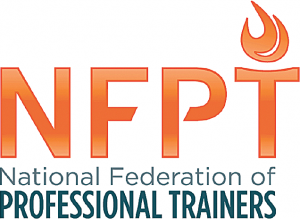NFPT Announces its Fitness Trends of 2018
Posted: January 1, 2018 in Suppliers
 National Federation of Professional Trainers
National Federation of Professional Trainers
LAFAYETTE, IN – Keeping pace with health and fitness trends is at the heart of a passionate fitness professional. This industry is dynamic; always growing, forever evolving, and progressing. Each year, thousands of fitness professionals look forward to learning the “top trends” for the upcoming year.
Some trends appear and reappear on yearly lists, while others are replaced by new and more dynamic approaches to teaching our clients the art and science of living well.
This year, we will see some of the same trends perhaps with a different twist. We will also see some new developments take place of old theories.
Here’s what you can expect for the 2018 year in health and fitness.
1. Wearable Tech. Wearable technology and fitness trackers are popular and varied. It’s likely we will continue to see advancements in the abilities and features of these fashionable fitness accessories.
Sports technology experts are working on new innovations daily and we will likely see such creations as smart clothing, smaller and more fashionable fitness devices, the ability to monitor blood glucose levels (a helpful feature for diabetics), and advanced technology capable of monitoring certain physiological changes during an activity that may prevent and detect injury.
As this technology evolves, personal trainers will need to make a commitment to learn about the various devices on the market and be able to answer questions from clients. Add this one to your continuing education efforts!
2. Live Streaming Classes. No shock here – as technology grows so too will the offering of streaming classes, virtual memberships, and new “online” fitness classes. It’s really a genius approach because it allows fitness experts to expand their reach and deliver their messages nationally – if not globally. What can you do as a professional to capitalize on this niche?
3. Online Health Coaching/Personal Training. Of all the upcoming trends, this is one of the most intriguing. First, this trend follows a growing popularity of online learning and degrees. We are seeing more virtual health coaching and personal training practices pop up all over the nation.
The overhead is lower for the professional and it allows fitness experts to deliver workouts and educational modules and tools to clients, literally, anywhere. Think about your own business and consider how you might tap into this trend.
4. Genetic Testing. There seems to be a growing market of consumers interested in knowing more about their genetic blueprint and how their genes may impact activity and nutrition. Nutrigenomix is one example of this type of testing. Many of the tests available are affordable while others carry a premium price tag.
As this area of research grows, we will likely see a greater demand for this type of testing. While this is outside the scope of a personal trainer, it’s an area we all need to understand to effectively answer questions our clients bring to us.
5. Ketogenic Diets & Intermittent Fasting. As we would suspect, new dietary “fads” always make the list. There’s the cabbage soup diet, the ice cream diet (say what?), Atkins, grapefruit diet, and there’s probably a Twinkie diet if we look hard enough. Most fad diets are just that – a brief craze.
However, there is a growing body of literature that reflects potential benefits to both (if they are done right and monitored by a qualified professional). Take some time to learn about the possible benefits and barriers. But, keep in mind, this is not within the scope of a trainer to suggest.
Learn all about the Ketogenic Diet on our NFPT Live Show.
6. Self-Care/Mind-Body Practices. These areas of wellness are gaining more respect and attention in the fitness world. The latest IDEA convention appeared to have a self-care/mind-body theme being emphasized from many different presenters. This trend is applicable to both fitness professionals and their clients.
We need to practice self-care as well as promote it. Fortunately, you can incorporate the basic principles of both self-care and mindfulness in your training regimens and educational efforts.
7. Stress Reduction. To some extent, stress management has always been a part of health, but now there’s a growing call to action in the fitness world to help clients effectively manage and reduce the stress in their lives. Chronic stress impedes progress, negatively impacts motivation, and detracts from the overall quality of life. If we can’t find ways to impact this for our clients, their progress toward their health and fitness goals will be stunted.
8. Back to Basics. There’s no shortage of creative ways to program for our clients. One tour at a trade show will show you the thousands of products available to you and your clients. But have we gotten away from the basics? Many would say yes. It’s ironic because as the tech area explodes, we may see a return to the simple foundational principles of exercise.
A focus on LIIT (lower intensity interval training) over HIIT and a return to the basics of strength training, which includes principles of anatomy and physiology.
What we can expect to see in 2018 in our industry is not limited to these eight trends. 2018 is coming quickly, what can you predict for you and your clients? More importantly, how can you get ahead of the trends and build a more profitable 2018?

